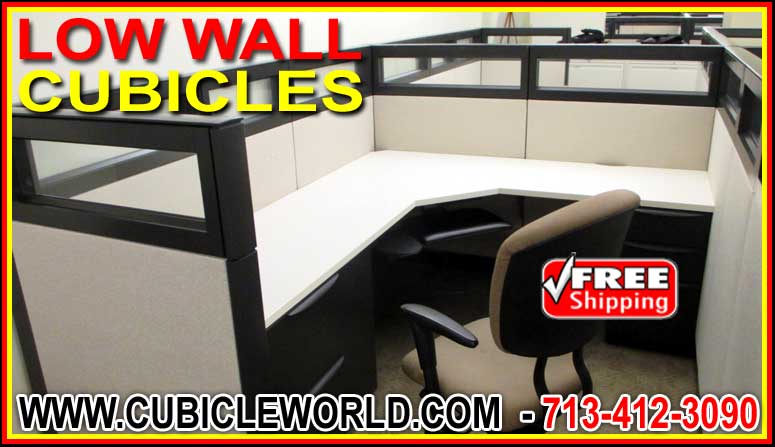
Low wall cubicles allow employees to interact while they work. While such a setting does compromise focus and privacy to a point, it often proves advantageous in environments where a free flow of ideas is essential to task completion. Any project that involves an elevated level of creativity will often benefit from the collective efforts of a team more so than it will from a single individual. Spontaneous brainstorming, relaxed meetings, and group scheduling of task completion will almost always get a project finished on time.
While panel heights vary to some extent, we could say that the overall average height for low wall cubicles is 42 inches. These smaller panels allow employees an open line of sight which opens up the workstation and eliminates the feeling of confinement that larger cubicle panels have generated at times. Cubicle systems can even be built with common desk areas divided by partitions that allow for continual teaming and idea sharing. These workstations also feature a clean, compact work that lends itself to a variety of interior decorating styles. Many do not even look like “cubicles” as most people visualize them, so the aesthetic tends to contribute a sense of forward thinking and positive momentum to the room.
A lot of accessories can be added to low wall cubicles, too. One is a type of cubicle shelf which attaches to panel interiors. This type of cubicle shelving comes with a set of stainless steel needles that are affixed to the back of the hard, plastic shelf. Panel or cubicle clips have pins on the back of the clip that point downward and sink into the grey cubicle wall fabric. These shelves can be removed or rearranged at will, allowing each employee to arrange his or her shelving according to personal need.
It goes without saying, too, that office space planning is often much easier when working with smaller cubicles. A low wall cubicle takes up far less space than its cumbersome, stereotypical predecessors of the 80s and 90s. Today’s modern call center cubicles and small office cubicles are typically custom-built to fit a specific size of the office and support a specific type of workflow.
There only one possible drawback to this semi-open concept design, and that is distraction. If you are planning to invest in low wall cubicles, you will need to proactively address possible off-task behavior before it happens. People who work well together tend to develop close bonds that can easily turn subjective in a professional environment. When this happens in an environment with minimal privacy, employees can quickly spiral away from task completion into personal jokes, stories, music favorites, and other activities that slow-down workflow. Policies for group interaction should be written and published to each member of the team before your low wall cubicles are installed.
With the right team dynamics and management, creativity and value production can exponentially increase in a cluster of low wall cubicles designed to bring out the best in every person through combined, group effort. Call now and get started with a free office layout design drawing.
